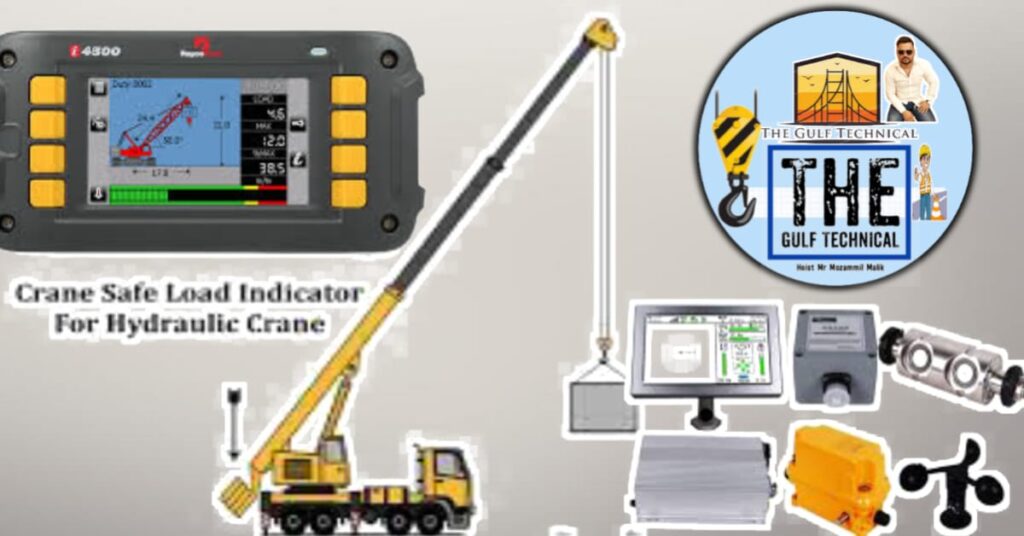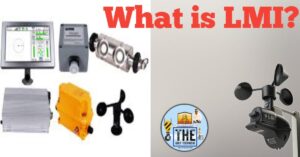If the load moment indicator (LMI) of a crane shows that the wind speed is within permissible limits but the crane is still alarming, there could be several potential reasons for this discrepancy. It’s essential to address this issue promptly to ensure the safety and proper functioning of the crane during lifting and rigging operations.
Here are some possible reasons why the crane may be alarming, despite the LMI indicating that the wind speed is within permissible limits:
What are the sensors for wind speed?
1) Sensor Malfunction: The crane’s wind speed sensor may be malfunctioning or providing inaccurate readings. This could be due to a damaged sensor, faulty wiring, or calibration issues. It’s important to inspect the wind speed sensor and ensure that it is functioning correctly. If necessary, the sensor may need to be recalibrated or replaced to provide accurate wind speed readings to the LMI.
2) System Error: There may be a systemic error within the crane’s LMI that is causing it to incorrectly interpret the wind speed data. This could be due to software glitches, communication errors between components, or other technical issues. Performing a diagnostic check of the LMI system, including its software and hardware components, can help identify and resolve any potential errors causing the false alarms.
3) Overriding Safety Features: Some cranes are equipped with safety features that automatically trigger alarms or shut down the operation if certain conditions are met, regardless of the LMI readings. The safety features are designed to prioritize the safety of the crane load lifting operation and may be triggered by factors such as gusts of high wind, equipment malfunctions, or potential hazards. It’s important to review the crane’s safety features and settings to ensure they are functioning as intended and not causing false alarms.
4) External Factors: While the LMI may indicate that the wind speed is within permissible limits, external factors such as sudden gusts of wind, wind direction changes, or turbulence near the crane can impact its stability and trigger alarms. It’s important to assess the actual wind conditions on-site, including any local environmental factors that may not be accurately reflected in the LMI’s readings. Anemometers or wind speed indicators placed at strategic locations around the crane can provide additional data to complement the LMI readings.
5) Interference or Environmental Conditions: The crane’s LMI and other electronic systems can be susceptible to interference from electromagnetic fields, radio frequency signals, or other environmental conditions that may affect their accuracy. Conducting an assessment of the surrounding environment and identifying potential sources of interference can help mitigate these issues.

What is the safe wind speed for crane operations?
All Areas: Mobile Crane, Crawler Crane, Tower Crane, Equipped with Anemometer
You just need to check the wind speed, which is showing 9.5 m/s. You need to stop.
No Man Basket, 7 M/s
No High-Level Installation at 9.5 M/S
We can do offloading, ground-level assembly, and shifting of materials in a wind of 9.8 m/s.
In addressing the discrepancy between the LMI’s wind speed readings and the crane’s alarms, it’s critical to follow proper troubleshooting procedures and involve qualified technicians or engineers with expertise in crane operation and safety systems. This may involve conducting diagnostic tests, inspecting the crane’s components, recalibrating sensors, updating software, and verifying the accuracy of the LMI readings.
What is the importance of monitoring wind speed when operating a crane?
Additionally, if the issue persists despite troubleshooting efforts, it’s crucial to prioritize the safety of the lifting and rigging operations by taking proactive measures to minimize risks associated with potential wind-related hazards. This may include implementing additional safety protocols, adjusting the lifting plan to account for wind conditions, or temporarily suspending operations until the issue is resolved.

Ultimately, the discrepancy between the LMI readings and the crane’s alarms requires a systematic approach to identify risk and address the underlying causes. By prioritizing safety, conducting thorough troubleshooting, and engaging qualified professionals, organizations can ensure the reliability and accuracy of the crane’s safety systems, including its response to wind conditions, during lifting and rigging operations.
Tags: crane (LMI) anemometers, crawlers, luffing & tower cranes, Wind Conditions and Crane Safety
